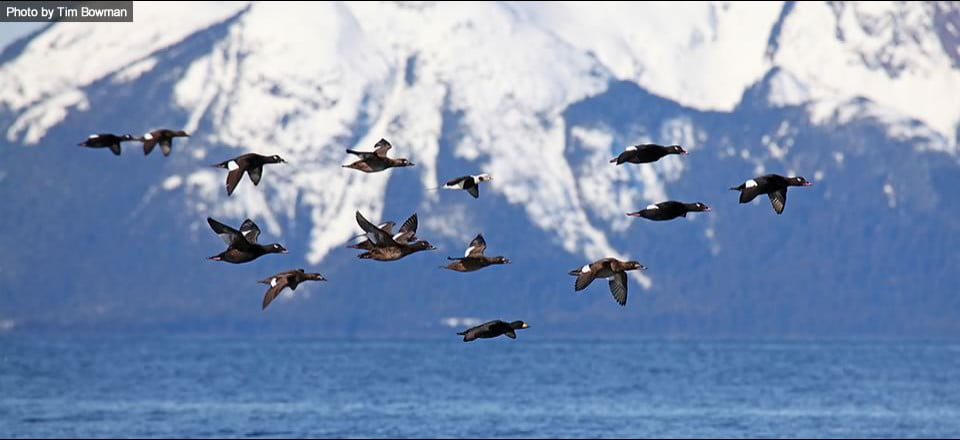Interim Report FY21
Interim Report FY22
Interim Report FY23
Final Report
Improving US Sea Duck Harvest Estimates through Improved Sampling Design and Model Development

Project Number: 163
Year Funded: 2021
Lead Institution(s): USGS Eastern Ecological Science Center
Project Lead: Andy Royle
Collaborator(s): Ben Augustine (USGS), Kathy Fleming (USFWS), Tony Roberts (USFWS), Adam Smith (ECCC)
Location: Atlantic Flyway
Focal Species: All Sea Ducks, Bufflehead (Bucephala albeola), Barrow’s Goldeneye (Bucephala islandica), Common Goldeneye (Bucephala clangula), Harlequin Duck (Histrionicus histrionicus), Long-tailed Duck (Clangula hyemalis), Common Eider (Somateria mollissima), King Eider (Somateria spectabilis), Spectacled Eider (Somateria fischeri), Steller’s Eider (Polysticta stelleri), Common Merganser (Mergus merganser), Hooded Merganser (Lophodytes cucullatus), Red-breasted Merganser (Mergus serrator), Black Scoter (Melanitta americana), Surf Scoter (Melanitta perspicillata)
Project Description: The level and composition of the harvest, derivation and distribution of the harvest and an assessment of the values and concerns of stakeholders are all necessary elements of effective harvest strategies and regulatory framework that ensure sustainable harvests. This project involves three primary objectives: 1.) Develop Bayesian hierarchical models to estimate species’ harvests by integrating data from the Waterfowl Harvest Survey and the PCS. 2.) Evaluate model structures to identify critical factors affecting harvest estimation and determine streamlined design elements that capture main sources of uncertainty for performance. Model components to evaluate include: (a) the general model structure, including likelihood and prior distributions (e.g., including total harvest data only vs. also the number of hunters, hunting days, etc.), (b) incorporating underlying trends or auto-regressive structure, and (c) individuals as repeated measures or random effects to evaluate bias on resulting estimates. 3.) Based on the above results and new survey methodology, design a sampling scheme that most accurately estimates sea duck harvest on an annual basis. Recommendations for future survey/sampling modifications based on results from the study (e.g., updated sample size targets and/or sampling frames for stratification based on model variances, guidelines for repeat sampling of the same individuals) will be provided.
Project Reports:
